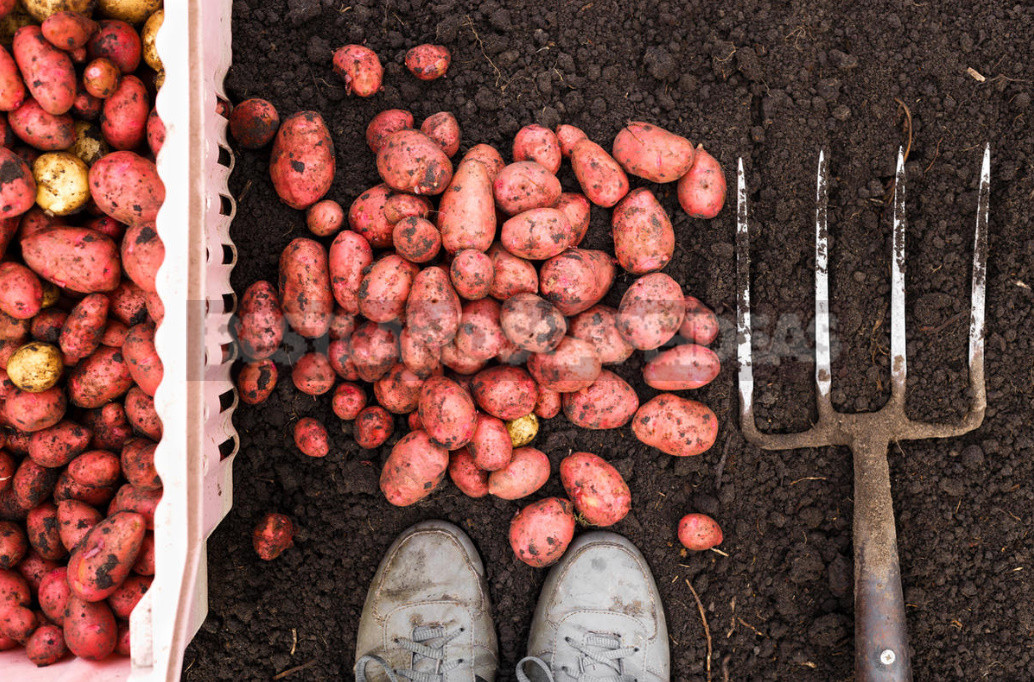
All the subtleties of the annual ceremonial harvest are carefully passed from mouth to mouth, from generation to generation, from father to son.
Most of the potato growers belong to this culture with true pragmatism: when 10-15 or even all 50 acres of land are allocated for planting, it is not up to an individual approach. The rest believe that potatoes are worthy of “dancing with tambourines” no less than tomato or eggplant, and therefore belong to the care of potatoes with all the attention. But both for the first and for the second culmination of the season — is harvesting. We’ll figure out when, what and how to dig potatoes.
Dig or not dig — that’s the question!
It is important to remember that the most obvious and reliable sign of the readiness of the crop is the withering and drying of the tops. As soon as you notice that potato “tops” have lost their appeal, to dig “roots” you have 20 days. Longer lay the tubers in the ground not worth it. I look at the forecast, choose weather permitting and without delay undertake a shovel.
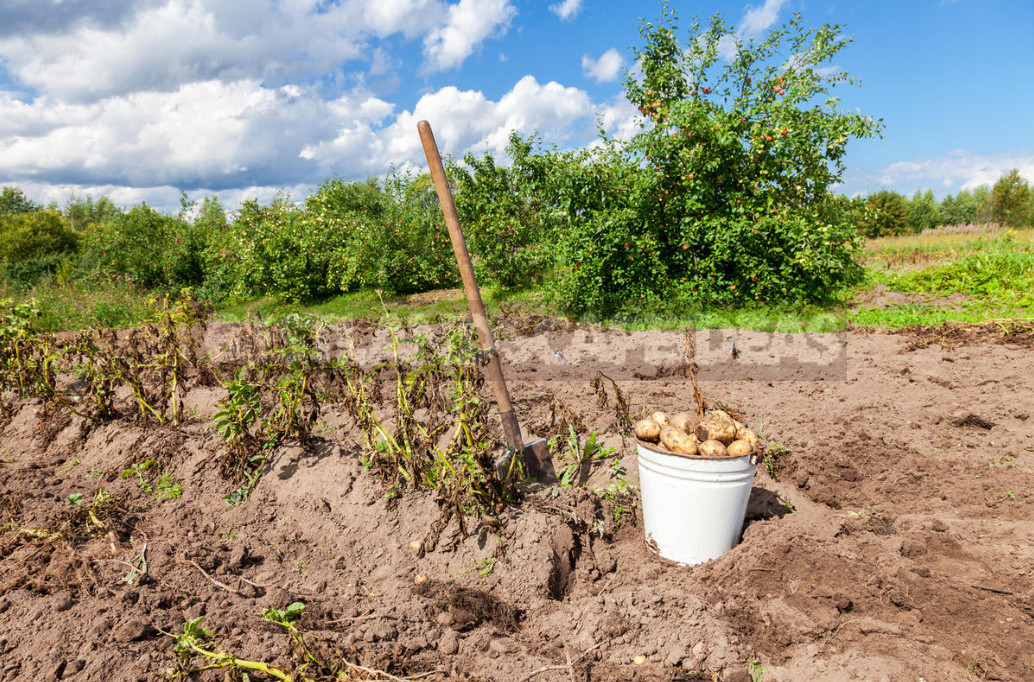
It is necessary to pay attention not only to the situation with precipitation, but also to night temperatures. It so happens that the days are fine and warm, and at night already catches frost. Potatoes, even a little touched by sub-zero temperature, will have an unpleasant sweet taste, and it will not be possible to keep it.
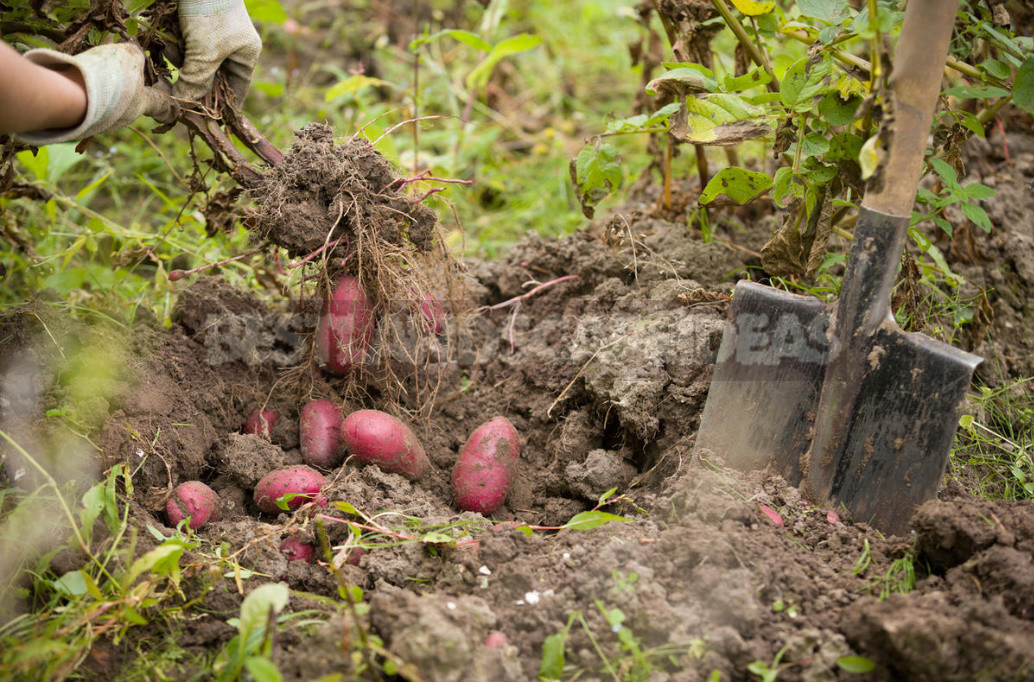
Flour of choice
So, the harvest is ripe, you even dug up a couple of bushes to make sure that the potatoes are time to clean up. What kind of tool is suitable for this case? And there are three of them in our Arsenal: a shovel, a motor-block and a pitchfork. Consider the pros and cons of each.
Motor cultivator
Many gardeners, without sufficient information, do not trust the digging of their potatoes to the technique because of the fear of spoiling half of the crop. And because the cleaning convened all the relatives who can hold a shovel, as well as their children, grandchildren and dogs for the selection of tubers.

However, it’s not so scary. The mini-tractor to harvest potatoes is used only as a pulling force. Practically on any model it is possible to get various hinged equipment, including the potato digger consisting of the plow with the steel rods welded to it. Extraction of tubers to the surface is quite delicate.
The undoubted advantage of technology — speed and high performance. Having a mini-tractor, can be taken for the treatment of large areas. In unstable weather, when the account every dry hour, only with the help of tillers can quickly dig up and harvest.
Cons are obvious: mini-tractor and attachments to it need to buy in addition to the existing garden tools you have. In addition, like any other equipment, the tillers will need space for storage, maintenance and refueling.
Shovel
Technology is good, but not everyone has the opportunity or the need to get it. Spade has always been a faithful helper of any vacationer. Many people prefer to dig potatoes with it. The current shovel is not as simple as the shovel of our grandmothers. Then there were only 2 types of metal blades — bayonet and scoop, and only 3 types of cuttings — long, short and broken. In our time, the choice is much wider and more diverse, and the tool is selected based on the type of soil on the site and the type of work that you plan to carry out with it. Which shovel is more convenient to use in each case?
If your site is light loose earth with the presence of sand, then you will approach bayonet shovel with a rectangular or slightly rounded blade. Working this tool is very effective — the blade of similar shape captures a large volume of soil.
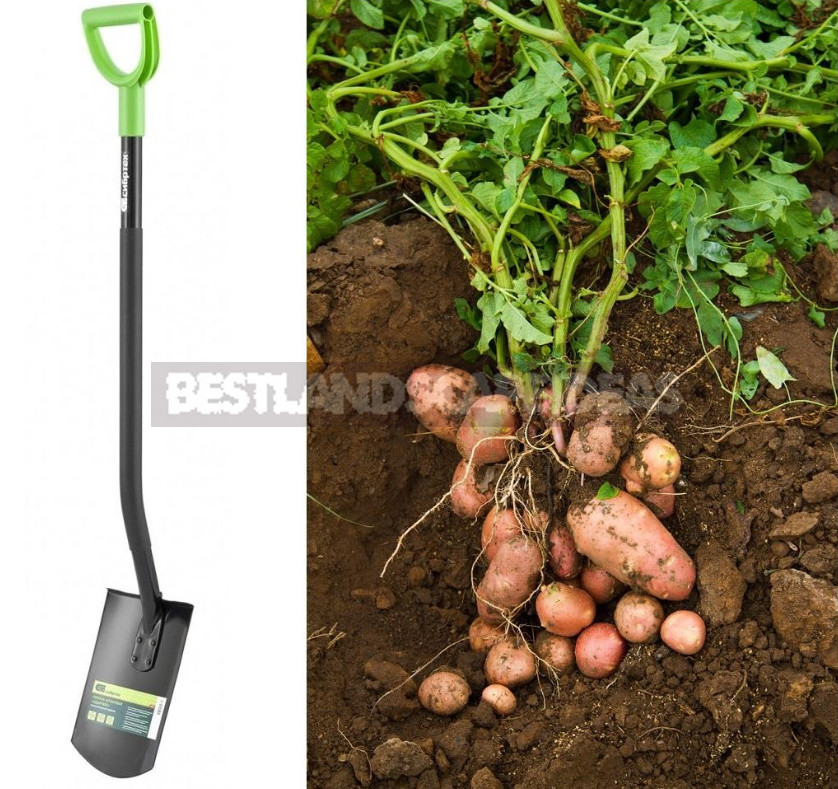
But for use on heavy soil, this shovel will not fit. Stick it will be problematic, and for the back is not safe. To work on a dense loam, you need to choose a shovel with a pointed blade.
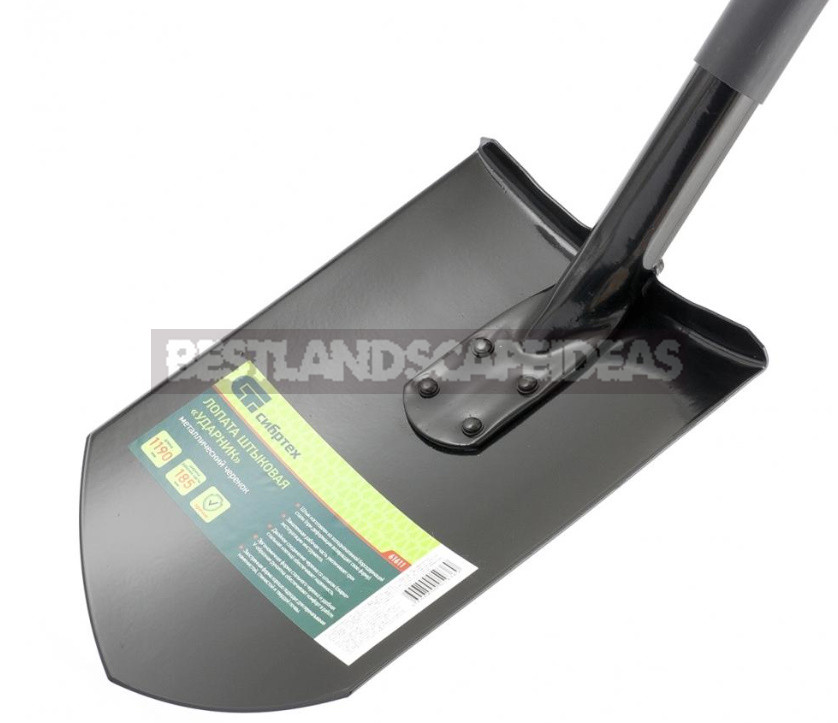
When buying, pay attention to the stalk. In a truly reliable shovels it is made of steel and has a polypropylene pad.
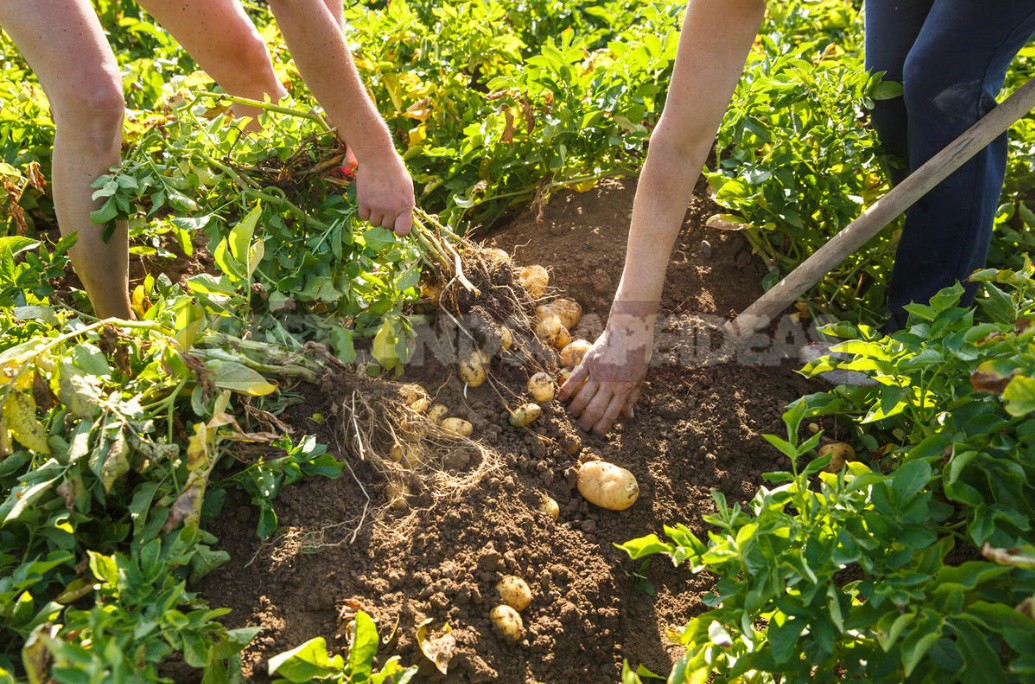
A good durable shovel is a great tool for harvesting potatoes. It would seem that some advantages. However, some gardeners say a categorical “no” to this tool, explaining that the blade often cuts the tubers, and they become unsuitable for storage.
Fork
Supporters of the fork believe that while using this tool is easier to dig the earth wakes up between teeth. The potato nest is easier to remove completely to the surface. This, of course, the pros. Opponents say that the tuber is pricked with a pitchfork at least as often as it is damaged by a shovel. But punctured potatoes can not be stored at all — it immediately begins to rot.
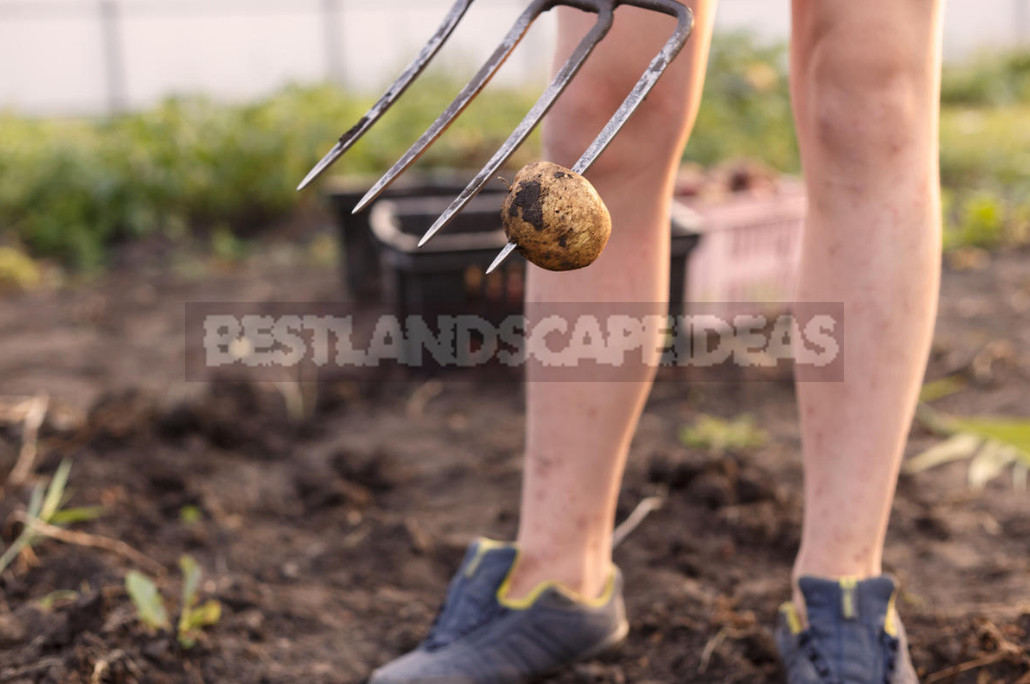
In any case, if you have stopped on a pitchfork, it is desirable to choose them with 4 teeth, which should be flat. Especially talented on the fabrication of the gardeners adapted for digging potatoes crushed stone pitchfork, who have the teeth anymore, and they are located often. Assure that it is convenient!
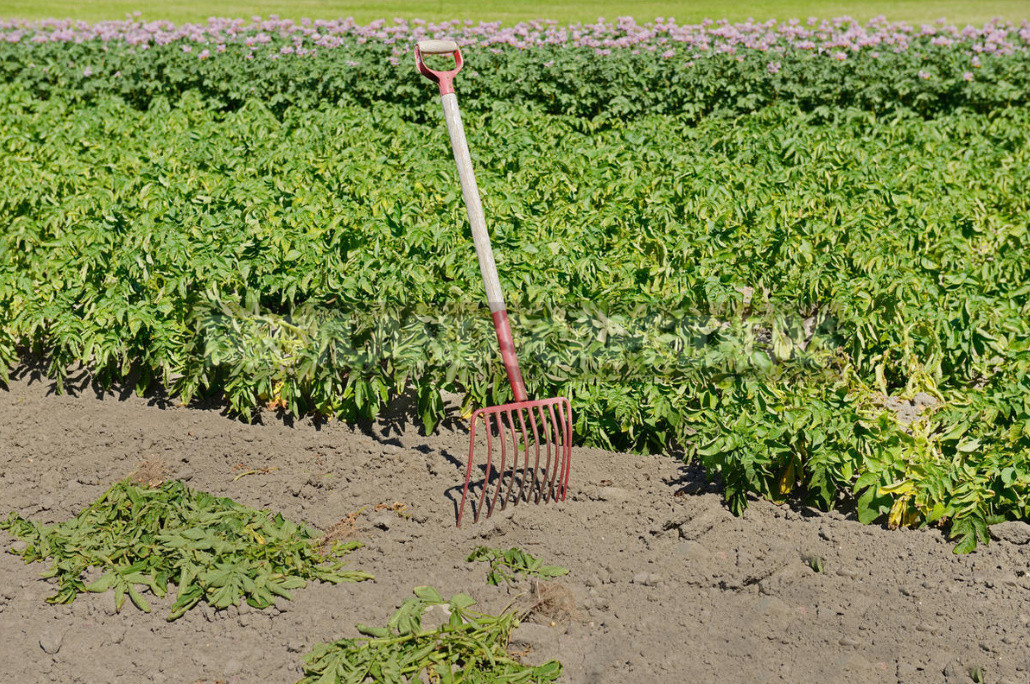
9 useful tips
So, the potatoes are ready to harvest, the tool is selected, you can start. Listen to some recommendations of experienced gardeners before you get to work.
1. If you have the tillers, potato digger is equipped with before beginning excavation must be cut tops. Otherwise it will interfere with the operation of the equipment, and then the tubers will be hurt. When using a shovel or fork mowing “tops” — an optional condition, especially if they are thoroughly withered. If the time has come, and the tops are still fresh, removing it, we accelerate the maturation of potatoes. And, of course, necessarily mowed, removed away and burned greens, touched by disease.
2. With disappointing forecasts and dig in the rain (but not in the pouring). Then you need to prepare in advance the room for drying the harvested potatoes.
3. If the weather is favorable, it is better to let the newly dug tubers lie on the bed for about 3 hours — thanks to this, the skin will become a little rough. These potatoes are better stored.
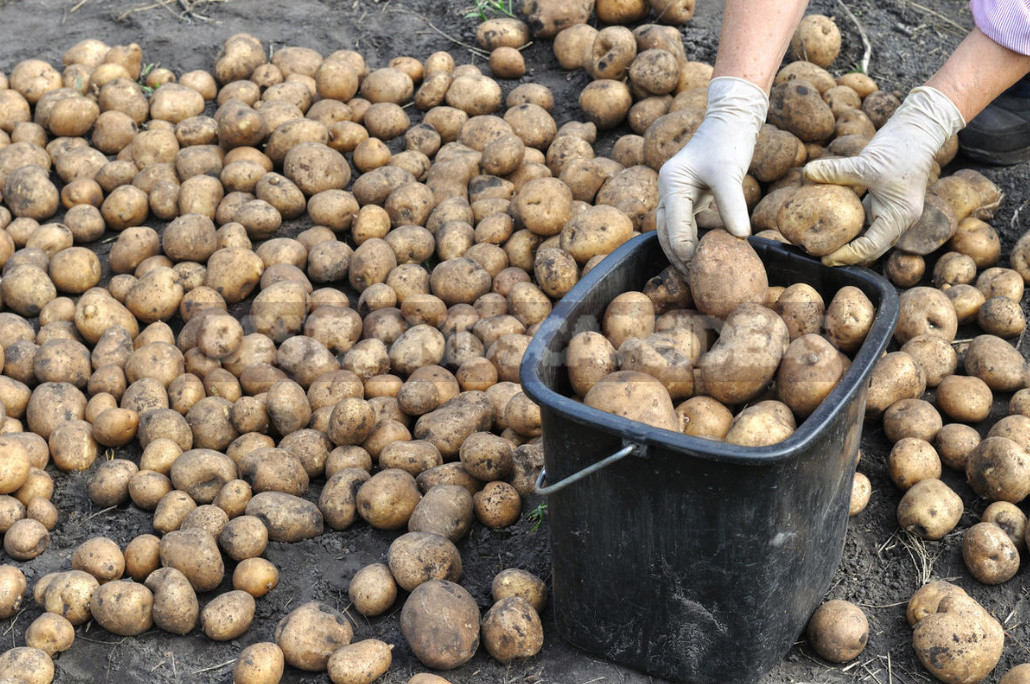
4. When digging a mini-tractor is not necessary to pass row after row, it is better through one. Otherwise, one of the wheels will move on the plowed ground, and the second on the dense, which is very inconvenient.
5. You need to dress thoroughly to clothes covered all parts of the body. Do not forget to apply a protective agent against mosquitoes and horseflies. Useful and a hat with a brim or at least a cap on his head.
6. The one who digs has to stand with his back to the sun — so he will see what he is doing.
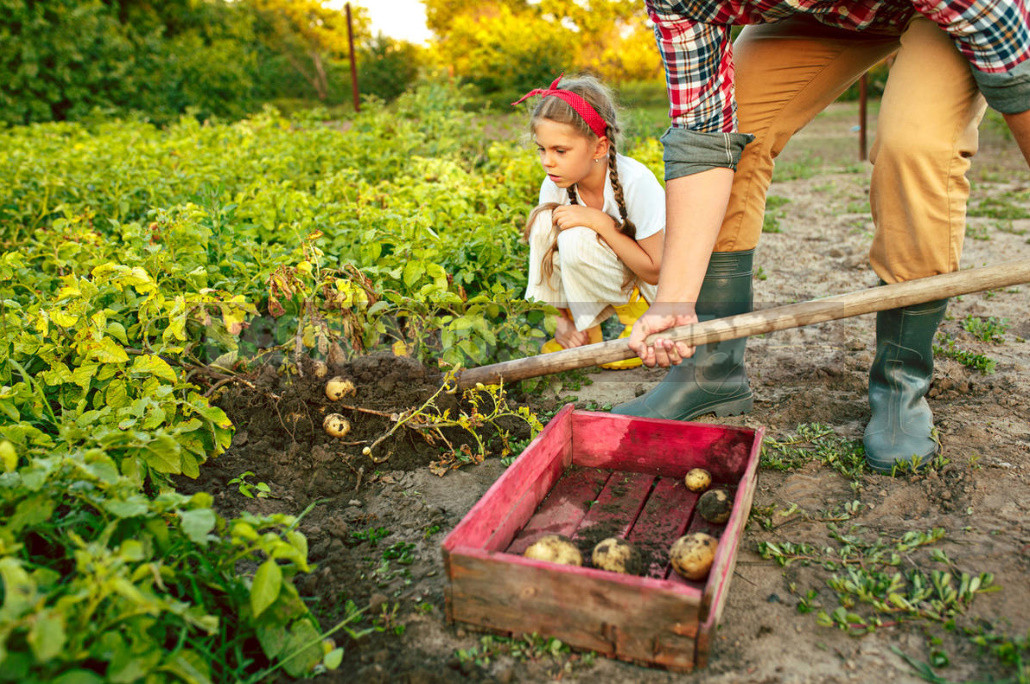
7. Going to the potato plantation, do not skimp on the bags — the work should be immediately 4. In the first postpone planting material for the next year — healthy tubers of the most prolific nests. The second give for large and medium potato, in the third put the little thing weighing 40-50 g. the Fourth bag for the damaged specimens, which will go directly for food or animal feed.
8. After harvesting, do not be lazy to remove all plant residues and fertilize the land. Potatoes take a huge amount of nitrogen, potassium and phosphorus compounds. Nitrogen fertilizers in autumn make no sense, and phosphorus and potassium — it is necessary.
9. For the collection of potatoes well adapted plastic buckets — they are lighter than metal. Better yet, use a recycle bin, so you don’t have to carry in addition to Taros and crumbling the earth. Trifle, but nice!
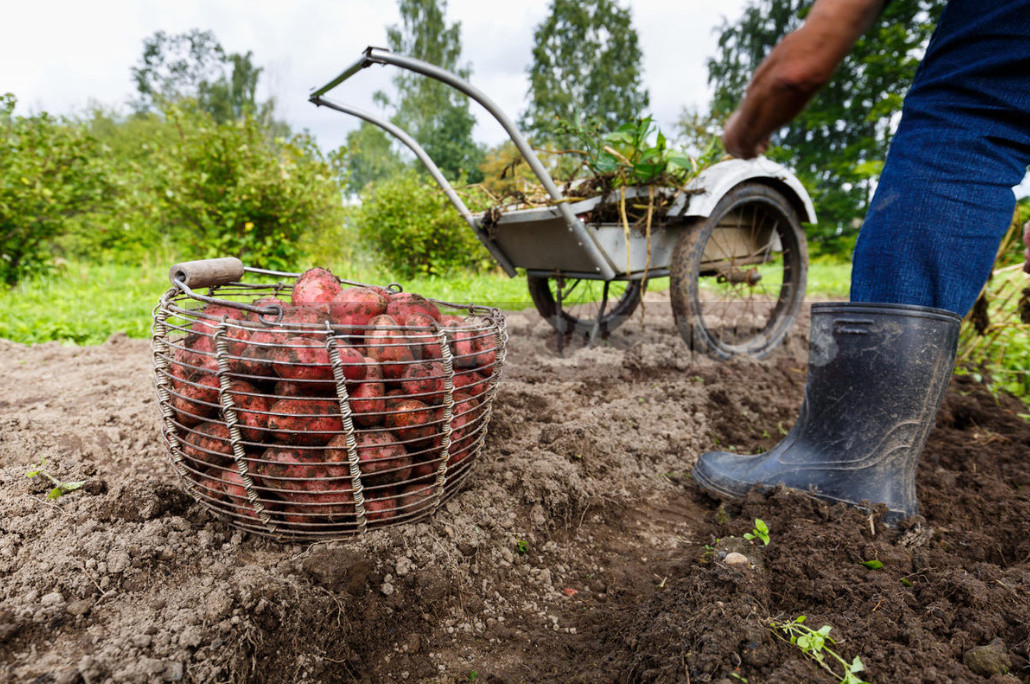
It is not enough to grow a good harvest, you need to correctly determine the timing of its harvest. Early digging is a shortage and immature tubers, with overexposure increases the risk of infection with late blight, potatoes can rot or freeze. It is also important to calculate your strength and provide yourself with a suitable tool for processing the plantation. And what tricks do you use? Share your potato digging experience in the comments.
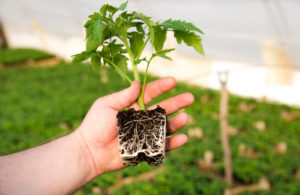
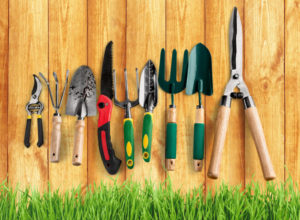

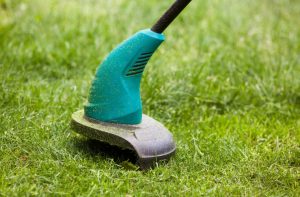
Leave a Reply